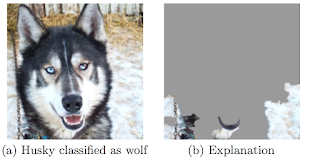Let us take a moment to appreciate them:
The Random Forest™ is my shepherd; I shall not want.
He makes me watch the mean squared error decrease rapidly.
He leads me beside classification problems.
He restores my soul.
He leads me in paths of the power of ensembles
for his name's sake.
Even though I walk through the valley of the curse of dimensionality,
I will fear no overfitting,
for you are with me;
your bootstrap and your randomness,
they comfort me.
You prepare a prediction before me
in the presence of complex interactions;
you anoint me data scientist;
my wallet overflows.
Surely goodness of fit and money shall follow me
all the days of my life,
and I shall use Random Forests™
forever.
One thing I learned the hard way was that you should not get to attached to an algorithm for prediction. This probably applies to other areas as well. When I participated in the Observing Dark Worlds challenge, I fell into this trap by sticking to Random Forests. My model performed poorly, but instead of thinking about another algorithm I thought about better features. The winner of this competition used a Bayesian approach.
You can find implementations in R (randomForest package) or in Python (scikit-learn library).

